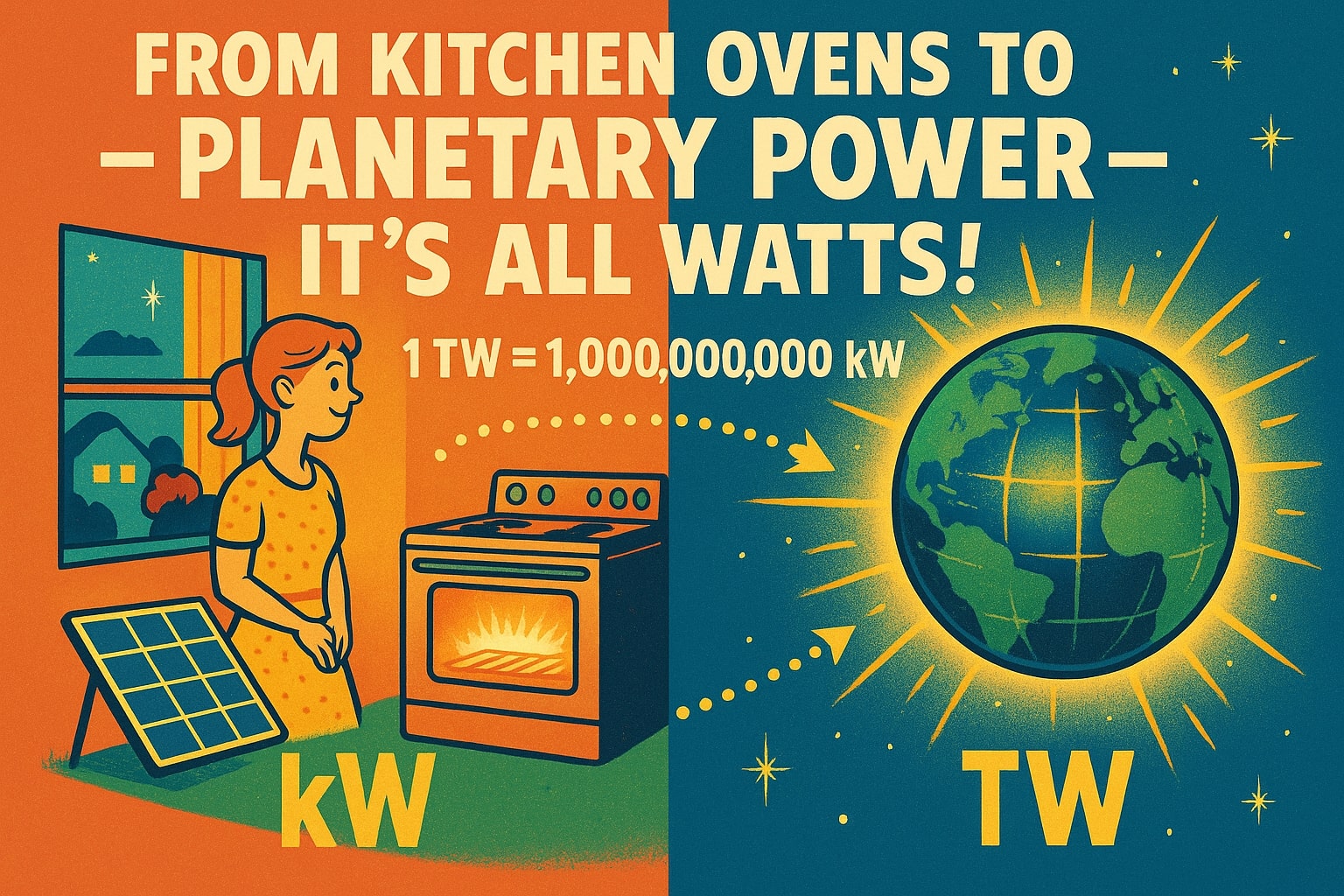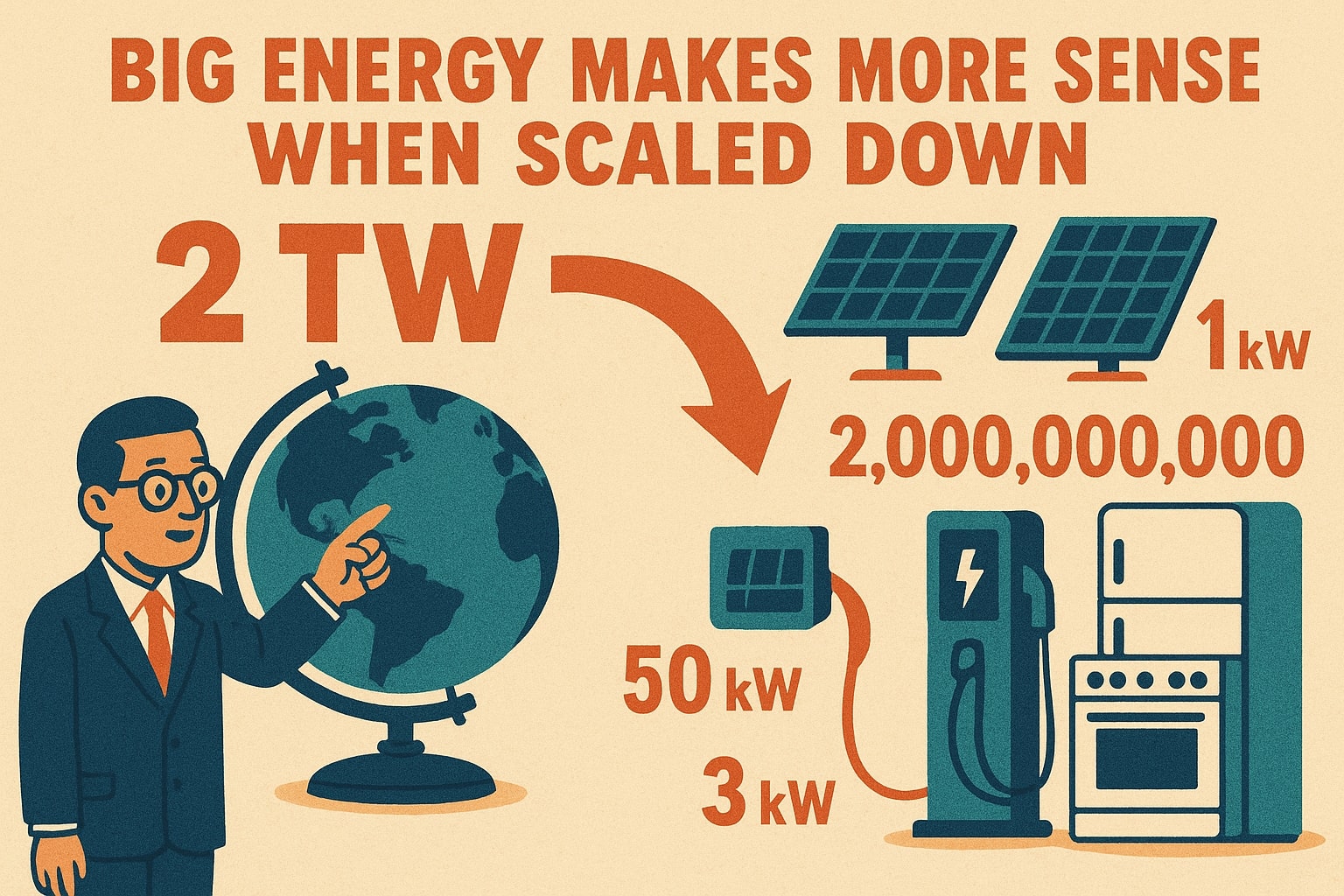Terawatt to Kilowatt – How to convert TW to kW
Need to convert terawatt to kilowatt? These two power units exist on opposite ends of the energy spectrum. Kilowatts describe household power use and small-scale systems, while terawatts represent the total energy output of countries — or the entire planet. Although they’re separated by a factor of one billion, the conversion is straightforward because both are part of the metric system. Let’s break down the math, see where each unit is used, and understand why converting between them helps us grasp the scale of global energy.

What is a terawatt (TW)?
A terawatt equals 1 trillion watts (1 × 10¹² W), or 1 billion kilowatts (kW). It’s used to measure enormous power totals, such as global electricity consumption, continental grids, or the combined output of entire industries.
According to the International Energy Agency (IEA), the planet’s average energy demand is roughly 18–20 TW at any given moment, a number that grows each year as more sectors electrify.
What is a kilowatt (kW)?
A kilowatt equals 1,000 watts (1 × 10³ W) and is one of the most common units for everyday energy use. It’s the scale you’ll see on your electricity bill or when checking the rating on appliances and solar panels.
A home oven might use 2–3 kW when operating, while a small electric car charger consumes 7–11 kW. Kilowatts are also used for measuring the capacity of small to mid-sized renewable installations like residential solar arrays.
How to convert terawatt to kilowatt
The conversion factor is simple:
1 terawatt = 1,000,000,000 kilowatts (1 TW = 10⁹ kW)
To convert:
Kilowatts (kW) = Terawatts (TW) × 1,000,000,000
Example: If global wind energy reaches 3 TW of installed capacity:
3 × 1,000,000,000 = 3,000,000,000 kW
Need to skip the math? Use our Power Converter or check other Conversion tools for instant results.
Did you know?
-
Global power footprint: Humanity consumes enough electricity to average about 20 TW of power demand, equivalent to 20 billion kW, a figure that keeps climbing.
-
Renewable expansion: Global solar capacity passed 1 TW (1 billion kW) by 2023, with projections to double by the end of the decade.
-
Historic energy use: Just over a century ago, worldwide electricity generation totaled under 10 GW (10 million kW) — less than one-thousandth of today’s demand.
-
Natural energy supply: Earth’s atmosphere absorbs roughly 173,000 TW of solar energy daily, a reminder of how much more energy reaches our planet than we currently utilize.
Why Scaling Down Helps Visualize Energy
While terawatts help policymakers and scientists discuss global energy capacity, converting them into kilowatts makes the numbers easier to visualize. Reports from Bloomberg New Energy Finance highlight how breaking huge figures down into kilowatts can help illustrate how renewable energy projects, household consumption, and industrial growth contribute to the bigger picture.
For example, when a nation announces 2 TW of renewable energy goals, framing it as 2 billion kW can help businesses and citizens relate that figure to the appliances and systems they use every day.
From Global Grids to Everyday Devices
Converting terawatt to kilowatt is simply multiplying by a billion, but understanding the scale difference bridges the gap between global energy policy and daily life. Kilowatts make energy tangible for individuals and industries, while terawatts capture the magnitude of humanity’s collective power needs and ambitions.
For fast and accurate calculations, use our Power Converter or explore other Conversion tools to handle any power conversion, no matter how large or small.


